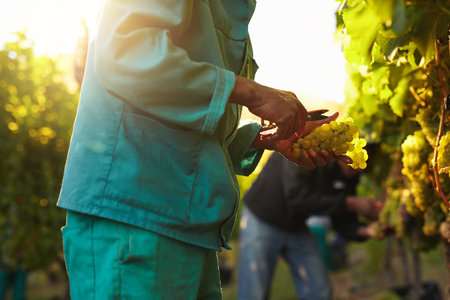New research shows how temporary foreign workers may be the key to Canada’s solving agricultural labour shortages
By Jennifer Jackson
Some farmers may have experienced firsthand the industry’s growing labour shortages when hiring workers. The Conference Board of Canada is releasing a report delving into these shortages and the potential role of foreign workers in filling the void.

jacoblund/iStock/GettyImagesPlus
Over the last decade, agricultural labour shortages have doubled, and are predicted to double again before 2025. This would raise the number of empty positions to 113,800 according to a Dec. 1 release.
“The agriculture sector is having difficulty recruiting and retaining domestic workers. As labour shortages have expanded, the sector has increasingly turned to temporary foreign workers to fill the labour gap,” Michael Burt, director of industrial economic trends for the Conference Board of Canada, said in the release.
“Finding solutions to the labour shortages in the years to come is critical for the future growth of the sector,” he said.
The report, “Sowing the Seeds of Growth: Temporary Foreign Workers in Agriculture,” showcases the reasons why temporary foreign workers (TFWs) fit the unique needs of the industry.
Some industry challenges include the rural locations of the job openings, in addition to an aging workforce, according to the release.
However, one of the largest challenges for the industry is the seasonal dependency, the release says. From peak to low seasons, agricultural job openings can differ by some 100,000 positions. This 30 per cent fluctuation is huge when compared with the average 4 per cent seasonal fluctuation of other industry sectors. Accommodating this fluctuation, more than three-quarters of TFWs in agriculture are part of the Seasonal Agricultural Worker Program.
Currently, one in 10 agriculture workers in Canada are TFWs. In fact, many farm operators have stated they would not be able to continue operations without access to TFWs, the release says.
So, how do the researchers suggest the industry should respond?
Increasing worker wages does not seem to be the answer, the release says. Despite agriculture wages rising in line with other industry sectors, there are fewer Canadians willing to work in ag.
Instead, “one potential solution may be re-evaluating the effectiveness of Canada’s immigration programs so that they better meet the needs of the agriculture sector,” according to the release. “A path toward permanent residency for migrant workers, who are filling a permanent market need, would assist farm operators in finding a permanent solution to their labour challenges.”
The report draws research from three years’ worth of labour market data. The research was conducted by the Agricultural Human Resource Council and the Conference Board of Canada.